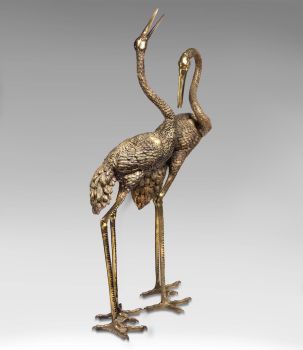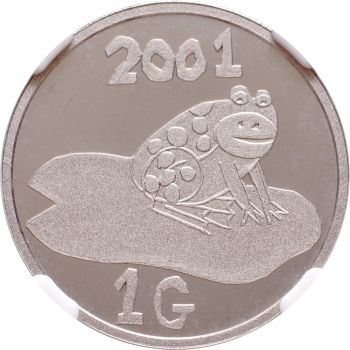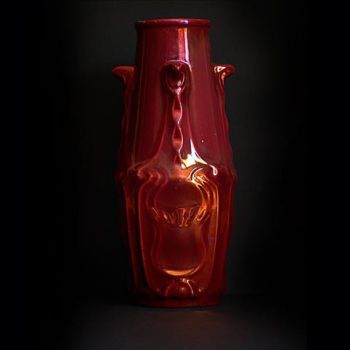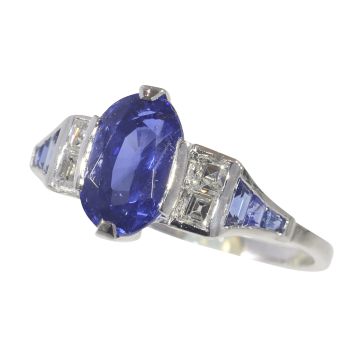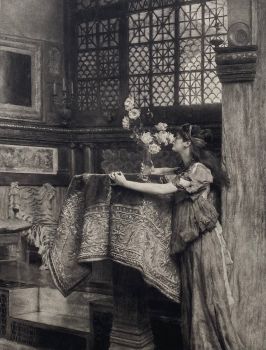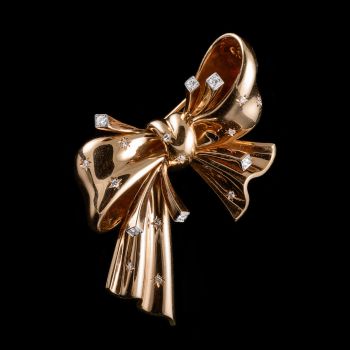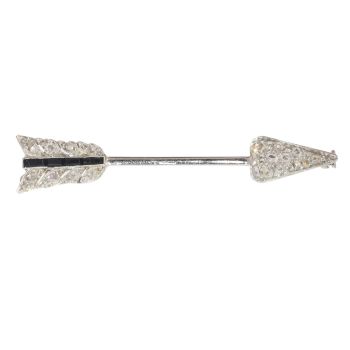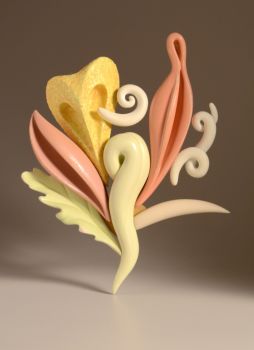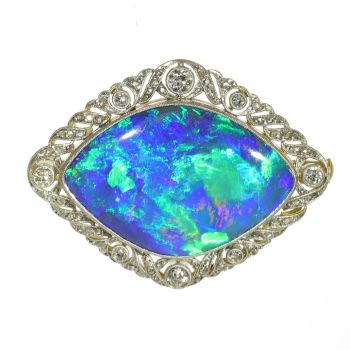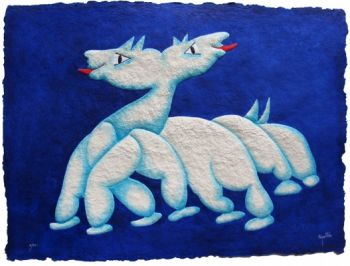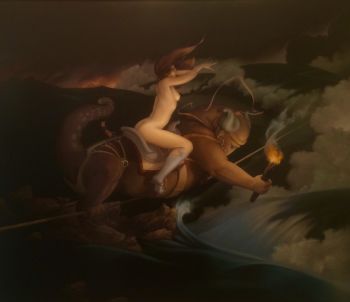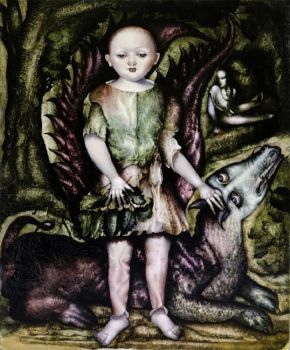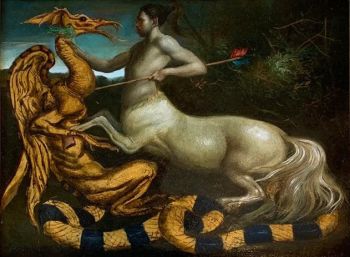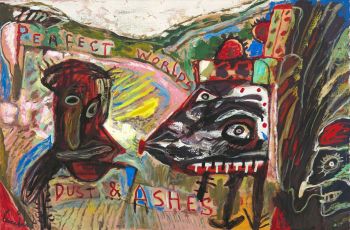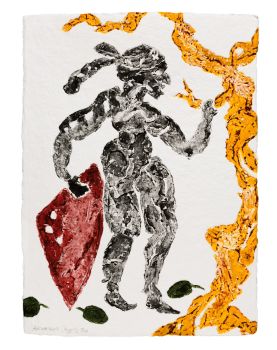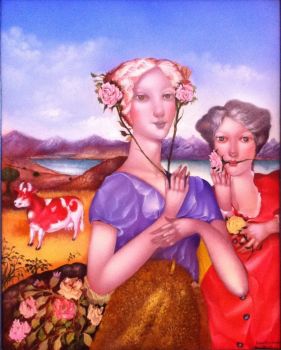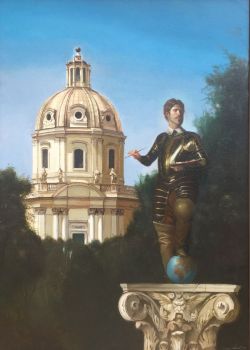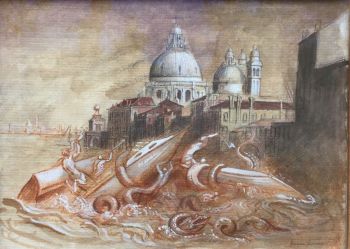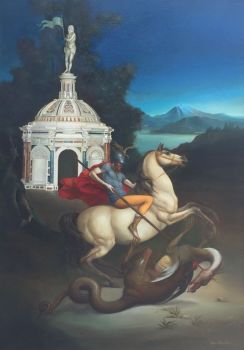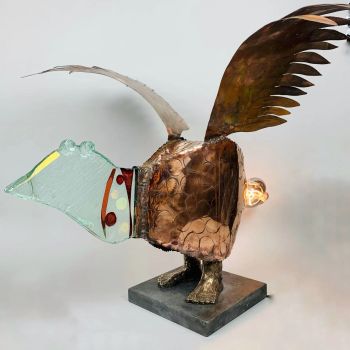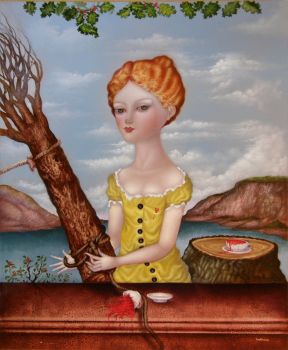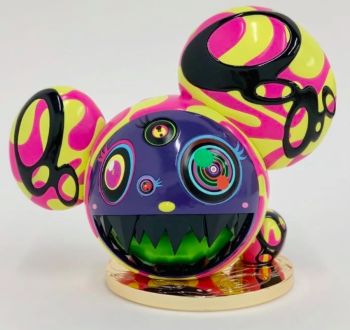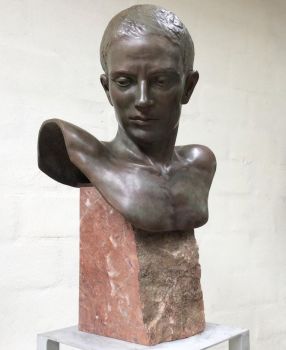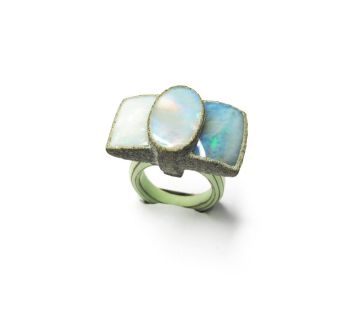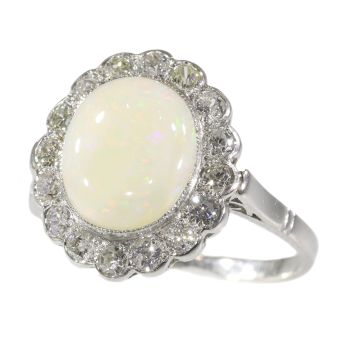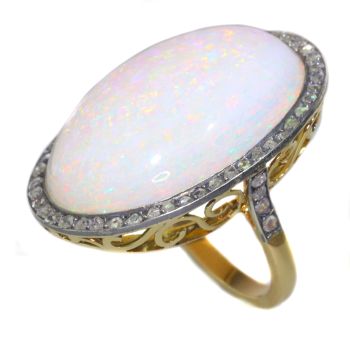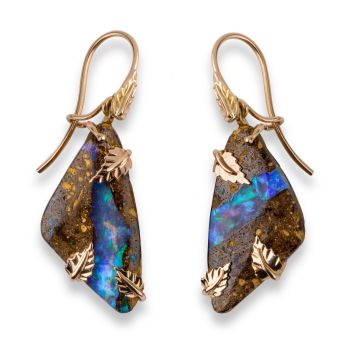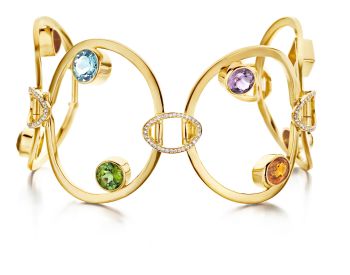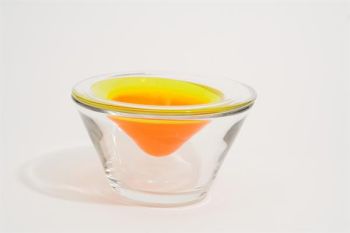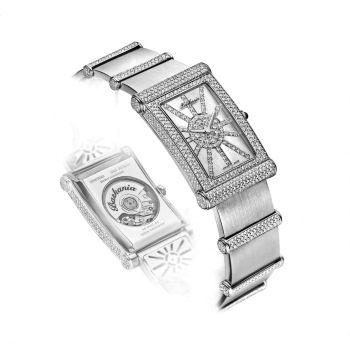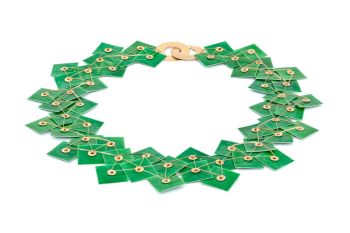Affascinante spilla vittoriana raffigurante due grifoni che proteggono le loro uova 1890
Artista Sconosciuto
OroOpalePietra preziosa
€ 4.400
Adin Fine Antique Jewellery
- A proposito di opere d'arte
As is typical for these fantastical creatures, two griffins take on a guarding posture with their hissing lion heads and clawed eagle hindquarters to protect the two cabochon cut opals in this 14K yellow gold Victorian brooch from 1890. Opposing eachother and yet entangled by their tails, it's clear that these fighters will empower you during every challenge.
Antique jewelry object group: brooch
Condition: excellent condition
- (more info on our condition scale)
Country of origin: unknown
Style: Between Victorian and Art Nouveau - Victorian decorative arts refers to the style of decorative arts during the Victorian era. The Victorian era is known for its eclectic revival and interpretation of historic styles and the introduction ofcross-cultural influences from the middle east and Asia in furniture, fittings, and Interior decoration. Victorian design is widely viewed as having indulged in a regrettable excess of ornament.
The Arts and Crafts movement, the aesthetic movement, Anglo-Japanese style, and Art Nouveau style have their beginnings in the late Victorian era. Art Nouveau (French for New Style) is an international movement and style of art, architecture and applied ar - especially the decorative arts - that peaked in popularity at the turn of the 20th century (1890–1905).
The name "Art Nouveau" is French for "new art". It is also known as “Jugendstil”, German for "youth style", named after the magazine Jugend, which promoted it, and in Italy, Stile Liberty from the department store in London, Liberty & Co., whichpopularised the style. A reaction to academic art of the 19th century, it is characterized by organic, especially floral and other plant-inspired motifs, as well as highly stylized, flowing curvilinear forms.
Art Nouveau is an approach to design according to which artists should work on everything from architecture to furniture, making art part of everyday life.
- See also: late-Victorian, early Art Nouveau, eclecticismor more info on styles
Style specifics: Late Victorian / early Art Nouveau - The subject of this piece, although typical 19th Century, announces the coming of the Art Nouveau style.
Period: ca. 1890
- (events and facts in 1890)
Source of inspiration: Mythology
Theme: Two griffins, back to back, each garding their egg. Griffin - The griffin, a strange and legendary creature,usually represented as being part eagle and part lion (and occasionally part serpent). As the lion was traditionally considered the king of the beasts and the eagle the king of the birds, the griffin was thought to be an especially powerful and majestic creature.
Griffins are normally known for guarding treasure. In antiquity it was a symbol of divine power and a guardian of the divine. Most contemporary illustrations give the griffin forelegs like an eagle's legs with talons, although in some olderillustrations it has a lion's forelimbs; it generally has a lion's hindquarters. Its eagle's head is conventionally given prominent ears; these are sometimes described as the lion's ears, but are often elongated (more like a horse's), and are sometimesfeathered. The griffin motif is found in sculpture of the ancient Babylonians, Assyrians, Persians, and Romans; in beast allegories of the early Christians; and in Gothic architecture of the late Middle Ages. The griffin remains common in heraldy,representing strength and vigilance.
Material: 14K yellow gold
- (more info on precious metals)
Extra information:At the back there is a big hook on which a pendant, watch or end of long chain can be attached to.
Precious stones:Two cabochon cut opals
- (more info on precious stones)
Birthstones: Opal is the birthstone (or month stone) for October.
- (more info on birthstones)
Hallmarks: remains of a 14K mark
- (more info on hallmarks)
Dimensions: width 3,25 cm (1,28 inch)
Weight: 5,50 gram (5,50 dwt)
Reference Nº: 12284-0019
Copyright photography: Adin, fine antique jewelry
See also our:
griffin jewelry, mythological jewelry, yellow gold jewelry, jewelry with opal, latest acquisitions,
antique jewelry, estate jewelry, vintage jewelry or modern jewelry
Jewelry with birthstones (or month stones) for:
January - February - March - April - May - June - July
August - September - October - November or December.
Additional information:
jewelry glossary - wall of fame - visit us in Antwerp - subscribe to our mailinglist.
What is antique jewelry? - What is estate jewelry? - What is vintage jewelry? - A proposito di opere artista
Può succedere che un artista o un creatore sia sconosciuto.
Alcune opere non sono determinate da chi sono state realizzate o sono state realizzate da (un gruppo di) artigiani. Esempi sono statue dell'antichità, mobili, specchi o firme non chiare o leggibili ma anche alcune opere non sono affatto firmate.
Inoltre puoi trovare la seguente descrizione:
•"Attribuito a …." A loro avviso probabilmente opera dell'artista, almeno in parte
•“Studio di ….” o “Officina di” A loro avviso un'opera eseguita nello studio o nella bottega dell'artista, eventualmente sotto la sua supervisione
•“Cerchio di…” A loro avviso un'opera del periodo dell'artista che mostra la sua influenza, strettamente legata all'artista ma non necessariamente al suo allievo
•"Stile di..." o "Seguace di..." A loro avviso un'opera eseguita nello stile dell'artista ma non necessariamente da un allievo; può essere contemporaneo o quasi contemporaneo
•“Modalità di…” A loro avviso un'opera nello stile dell'artista ma di epoca successiva
•"Dopo …." A loro avviso una copia (di qualsiasi data) di un'opera dell'artista
•“Firmato…”, “Datato…” o “Iscritto” A loro avviso l'opera è stata firmata/datata/inscritta dall'artista. L'aggiunta di un punto interrogativo indica un elemento di dubbio
•"Con firma....", "Con data...", "Con iscrizione..." o “Riporta firma/data/iscrizione” a loro avviso la firma/data/iscrizione è stata aggiunta da qualcuno diverso dall'artista
Sei interessato ad acquistare questa opera d'arte?
Artwork details
Related artworks
Artista Sconosciuto
Braccialetto di diamanti del XVIII secolo con intagli di 2000 anni1790
€ 23.000Adin Fine Antique Jewellery
 A cura di
A cura diDanny Bree
1 - 4 / 12- 1 - 4 / 24
Mauboussin
Spilla fiocco Mauboussin1950 - 1955
Prezzo su richiestaAns Hemke-Kuilboer Juwelier & Antiquair
1 - 4 / 24- 1 - 4 / 24
- 1 - 4 / 24
- 1 - 4 / 12









